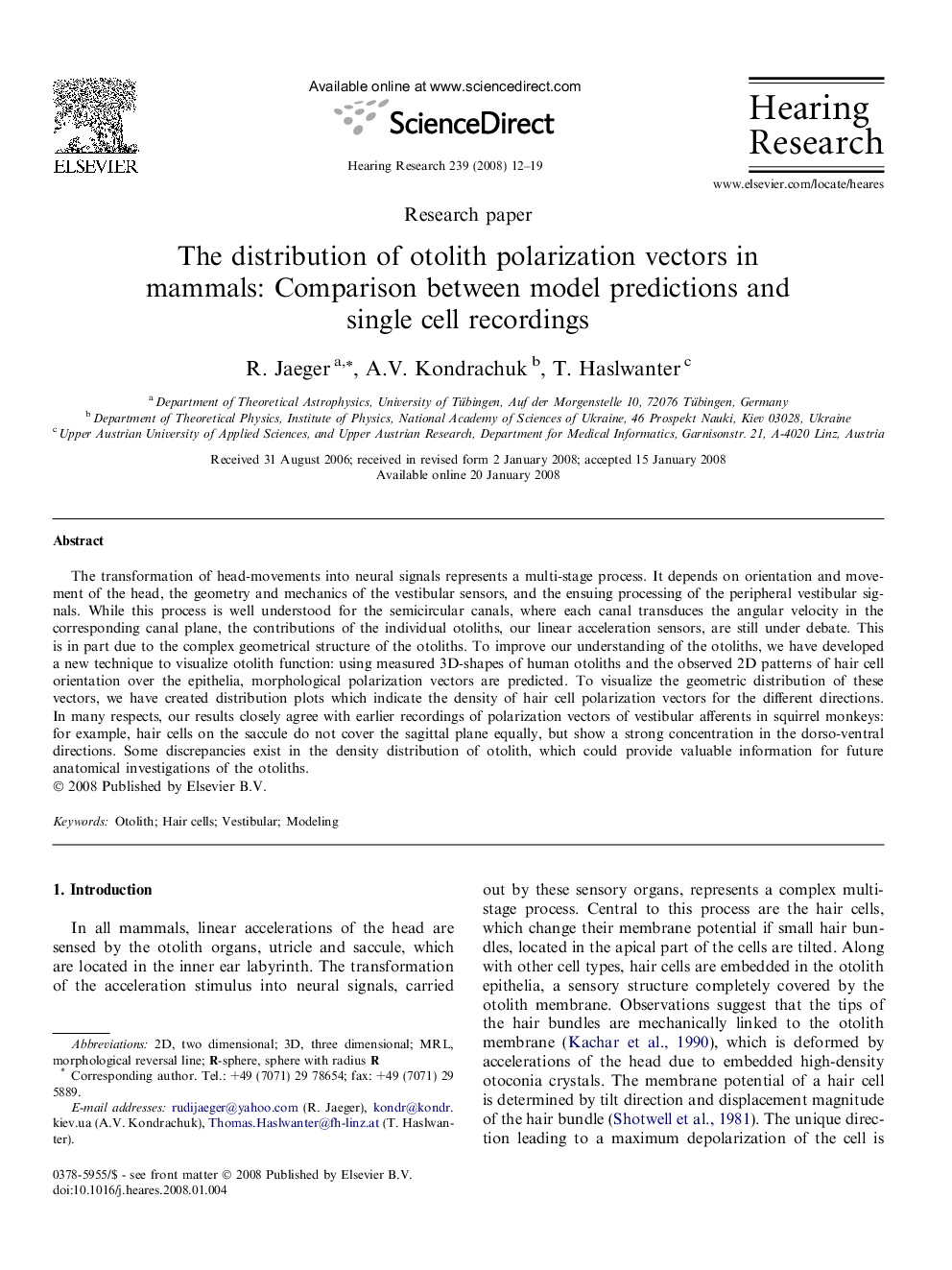| Article ID | Journal | Published Year | Pages | File Type |
|---|---|---|---|---|
| 4356085 | Hearing Research | 2008 | 8 Pages |
Abstract
The transformation of head-movements into neural signals represents a multi-stage process. It depends on orientation and movement of the head, the geometry and mechanics of the vestibular sensors, and the ensuing processing of the peripheral vestibular signals. While this process is well understood for the semicircular canals, where each canal transduces the angular velocity in the corresponding canal plane, the contributions of the individual otoliths, our linear acceleration sensors, are still under debate. This is in part due to the complex geometrical structure of the otoliths. To improve our understanding of the otoliths, we have developed a new technique to visualize otolith function: using measured 3D-shapes of human otoliths and the observed 2D patterns of hair cell orientation over the epithelia, morphological polarization vectors are predicted. To visualize the geometric distribution of these vectors, we have created distribution plots which indicate the density of hair cell polarization vectors for the different directions. In many respects, our results closely agree with earlier recordings of polarization vectors of vestibular afferents in squirrel monkeys: for example, hair cells on the saccule do not cover the sagittal plane equally, but show a strong concentration in the dorso-ventral directions. Some discrepancies exist in the density distribution of otolith, which could provide valuable information for future anatomical investigations of the otoliths.
Keywords
Related Topics
Life Sciences
Neuroscience
Sensory Systems
Authors
R. Jaeger, A.V. Kondrachuk, T. Haslwanter,
